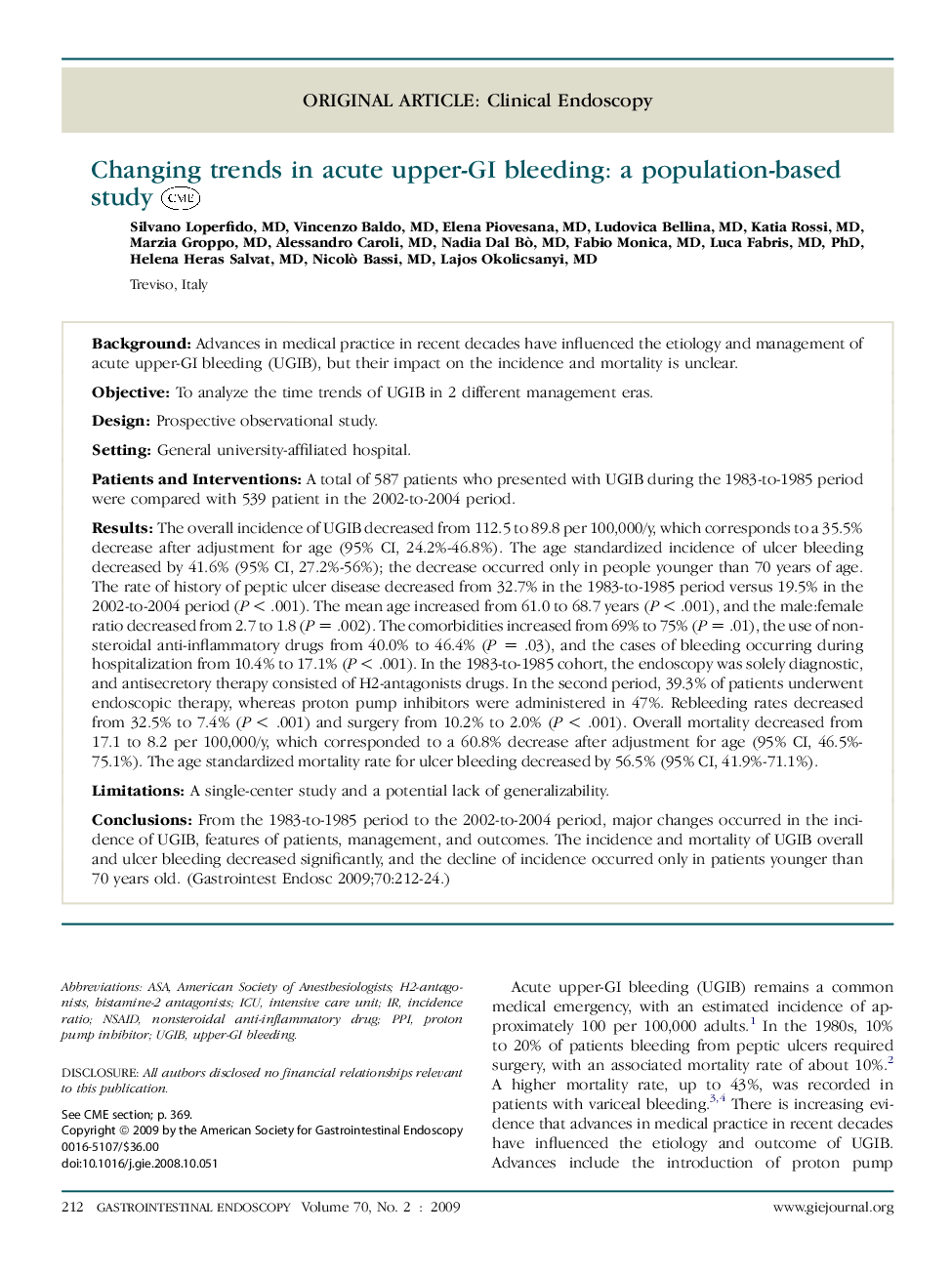| کد مقاله | کد نشریه | سال انتشار | مقاله انگلیسی | نسخه تمام متن |
|---|---|---|---|---|
| 3305167 | 1210350 | 2009 | 13 صفحه PDF | دانلود رایگان |

BackgroundAdvances in medical practice in recent decades have influenced the etiology and management of acute upper-GI bleeding (UGIB), but their impact on the incidence and mortality is unclear.ObjectiveTo analyze the time trends of UGIB in 2 different management eras.DesignProspective observational study.SettingGeneral university-affiliated hospital.Patients and InterventionsA total of 587 patients who presented with UGIB during the 1983-to-1985 period were compared with 539 patient in the 2002-to-2004 period.ResultsThe overall incidence of UGIB decreased from 112.5 to 89.8 per 100,000/y, which corresponds to a 35.5% decrease after adjustment for age (95% CI, 24.2%-46.8%). The age standardized incidence of ulcer bleeding decreased by 41.6% (95% CI, 27.2%-56%); the decrease occurred only in people younger than 70 years of age. The rate of history of peptic ulcer disease decreased from 32.7% in the 1983-to-1985 period versus 19.5% in the 2002-to-2004 period (P < .001). The mean age increased from 61.0 to 68.7 years (P < .001), and the male:female ratio decreased from 2.7 to 1.8 (P = .002). The comorbidities increased from 69% to 75% (P = .01), the use of nonsteroidal anti-inflammatory drugs from 40.0% to 46.4% (P = .03), and the cases of bleeding occurring during hospitalization from 10.4% to 17.1% (P < .001). In the 1983-to-1985 cohort, the endoscopy was solely diagnostic, and antisecretory therapy consisted of H2-antagonists drugs. In the second period, 39.3% of patients underwent endoscopic therapy, whereas proton pump inhibitors were administered in 47%. Rebleeding rates decreased from 32.5% to 7.4% (P < .001) and surgery from 10.2% to 2.0% (P < .001). Overall mortality decreased from 17.1 to 8.2 per 100,000/y, which corresponded to a 60.8% decrease after adjustment for age (95% CI, 46.5%-75.1%). The age standardized mortality rate for ulcer bleeding decreased by 56.5% (95% CI, 41.9%-71.1%).LimitationsA single-center study and a potential lack of generalizability.ConclusionsFrom the 1983-to-1985 period to the 2002-to-2004 period, major changes occurred in the incidence of UGIB, features of patients, management, and outcomes. The incidence and mortality of UGIB overall and ulcer bleeding decreased significantly, and the decline of incidence occurred only in patients younger than 70 years old.
Journal: Gastrointestinal Endoscopy - Volume 70, Issue 2, August 2009, Pages 212–224